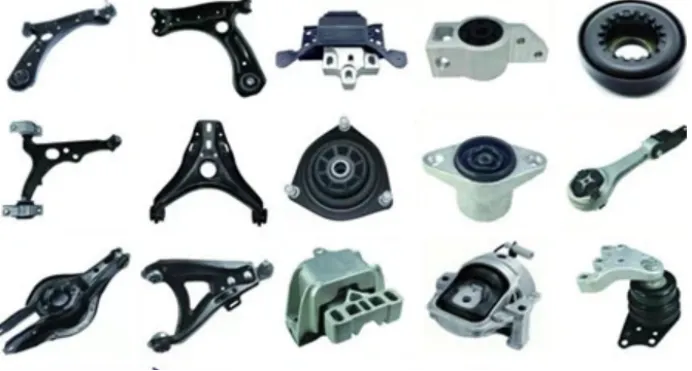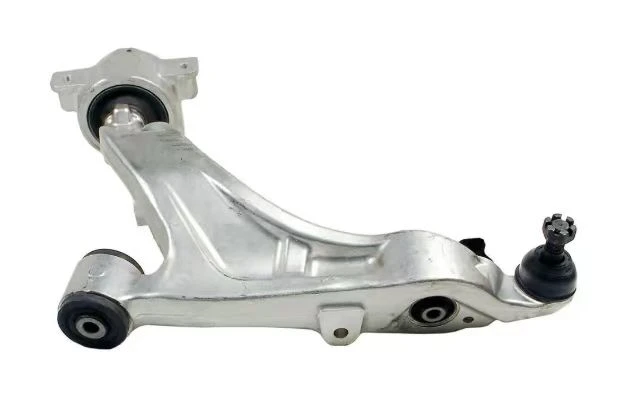
-
 Afrikaans
Afrikaans -
 Albanian
Albanian -
 Amharic
Amharic -
 Arabic
Arabic -
 Armenian
Armenian -
 Azerbaijani
Azerbaijani -
 Basque
Basque -
 Belarusian
Belarusian -
 Bengali
Bengali -
 Bosnian
Bosnian -
 Bulgarian
Bulgarian -
 Catalan
Catalan -
 Cebuano
Cebuano -
 Corsican
Corsican -
 Croatian
Croatian -
 Czech
Czech -
 Danish
Danish -
 Dutch
Dutch -
 English
English -
 Esperanto
Esperanto -
 Estonian
Estonian -
 Finnish
Finnish -
 French
French -
 Frisian
Frisian -
 Galician
Galician -
 Georgian
Georgian -
 German
German -
 Greek
Greek -
 Gujarati
Gujarati -
 Haitian Creole
Haitian Creole -
 hausa
hausa -
 hawaiian
hawaiian -
 Hebrew
Hebrew -
 Hindi
Hindi -
 Miao
Miao -
 Hungarian
Hungarian -
 Icelandic
Icelandic -
 igbo
igbo -
 Indonesian
Indonesian -
 irish
irish -
 Italian
Italian -
 Japanese
Japanese -
 Javanese
Javanese -
 Kannada
Kannada -
 kazakh
kazakh -
 Khmer
Khmer -
 Rwandese
Rwandese -
 Korean
Korean -
 Kurdish
Kurdish -
 Kyrgyz
Kyrgyz -
 Lao
Lao -
 Latin
Latin -
 Latvian
Latvian -
 Lithuanian
Lithuanian -
 Luxembourgish
Luxembourgish -
 Macedonian
Macedonian -
 Malgashi
Malgashi -
 Malay
Malay -
 Malayalam
Malayalam -
 Maltese
Maltese -
 Maori
Maori -
 Marathi
Marathi -
 Mongolian
Mongolian -
 Myanmar
Myanmar -
 Nepali
Nepali -
 Norwegian
Norwegian -
 Norwegian
Norwegian -
 Occitan
Occitan -
 Pashto
Pashto -
 Persian
Persian -
 Polish
Polish -
 Portuguese
Portuguese -
 Punjabi
Punjabi -
 Romanian
Romanian -
 Russian
Russian -
 Samoan
Samoan -
 Scottish Gaelic
Scottish Gaelic -
 Serbian
Serbian -
 Sesotho
Sesotho -
 Shona
Shona -
 Sindhi
Sindhi -
 Sinhala
Sinhala -
 Slovak
Slovak -
 Slovenian
Slovenian -
 Somali
Somali -
 Spanish
Spanish -
 Sundanese
Sundanese -
 Swahili
Swahili -
 Swedish
Swedish -
 Tagalog
Tagalog -
 Tajik
Tajik -
 Tamil
Tamil -
 Tatar
Tatar -
 Telugu
Telugu -
 Thai
Thai -
 Turkish
Turkish -
 Turkmen
Turkmen -
 Ukrainian
Ukrainian -
 Urdu
Urdu -
 Uighur
Uighur -
 Uzbek
Uzbek -
 Vietnamese
Vietnamese -
 Welsh
Welsh -
 Bantu
Bantu -
 Yiddish
Yiddish -
 Yoruba
Yoruba -
 Zulu
Zulu
Car Control Arm Durable & Precision Engineered Suspension Parts
- Understanding the Role of Control Arms in Vehicle Suspension Systems
- Material Innovation: High-Strength Alloys vs. Traditional Components
- Performance Benchmarking: Leading Manufacturers Compared
- Custom Engineering Solutions for Specialized Applications
- Case Study: Heavy-Duty Control Arm Implementation
- Maintenance Best Practices for Extended Service Life
- Future-Proofing Vehicle Dynamics Through Advanced Arm Technology

(a arm car)
Essential Components for Modern Vehicle Suspension
Automotive suspension systems rely on precision-engineered components like the car rear control arm to maintain optimal wheel alignment and force distribution. These critical linkages withstand vertical loads exceeding 1,500kg in standard passenger vehicles while maintaining dimensional stability within ±0.25mm under stress. Modern car suspension control arms incorporate multi-axis pivot points that reduce parasitic motion by 40% compared to decade-old designs.
Material Advancements in Load-Bearing Components
Leading manufacturers now utilize forged 4140 chromoly steel with ultimate tensile strength of 950 MPa, providing 18% greater fatigue resistance than conventional carbon steel. Advanced surface treatments including:
- QPQ salt bath nitride coating (0.15mm thickness)
- Electrophoretic paint deposition
- Micro-arc oxidation for aluminum components
These technologies extend component lifespan beyond 200,000km even in corrosive environments.
Manufacturer Technical Specifications Comparison
| Parameter | OEM Standard | Performance Tier | Racing Grade |
|---|---|---|---|
| Yield Strength | 350 MPa | 550 MPa | 820 MPa |
| Weight Reduction | 0% | 22% | 35% |
| Warranty Period | 2 years | 5 years | Lifetime |
Application-Specific Design Adaptations
Specialized configurations address unique operational requirements. Off-road variants feature 6mm thick skid plates that reduce impact damage by 73%, while motorsport applications employ spherical bearings with 360° rotation capability. Recent developments include:
- Modular arm assemblies for hybrid chassis configurations
- Real-time strain monitoring via embedded sensors
- CAD-optimized geometry for EV battery frame integration
Real-World Implementation Analysis
A commercial fleet operator achieved 14% reduction in suspension-related downtime after upgrading to reinforced car parts control arms. Post-installation measurements showed:
- Bushing deformation decreased from 1.8mm to 0.5mm
- Average component temperature reduced by 27°C
- Service intervals extended from 25,000km to 40,000km
Maintenance Optimization Strategies
Preventive maintenance protocols can extend control arm service life by 60%. Key practices include:
- Torque verification every 15,000km (±5Nm specification)
- Grease replenishment through zerk fittings (30-35 pumps per nipple)
- Non-destructive testing every 50,000km (magnetic particle inspection)
Advancing Vehicle Dynamics Through Arm Technology
The evolution of a arm car
components directly correlates with improved vehicle safety metrics. Modern designs demonstrate 31% better energy absorption in collision scenarios while maintaining precise wheel control during high-speed maneuvers. Upgraded suspension linkages now enable 0.95g lateral acceleration capabilities in production vehicles, rivaling dedicated track platforms.

(a arm car)
FAQS on a arm car
Q: What is the function of a car suspension control arm?
A: A car suspension control arm connects the vehicle's chassis to the wheel hub, stabilizes alignment during movement, and absorbs road shocks for smoother handling.
Q: How do I know if my car rear control arm is damaged?
A: Signs include uneven tire wear, clunking noises over bumps, or steering wheel vibration. Immediate inspection is recommended to avoid safety risks.
Q: Are car parts control arms interchangeable between vehicles?
A: No, control arms are model-specific due to varying suspension designs. Always verify compatibility using your vehicle's make/year before replacement.
Q: What's the difference between front and rear control arms in a car?
A: Front control arms primarily manage steering precision and weight distribution, while rear control arms focus on axle stability and maintaining wheel alignment during acceleration/braking.
Q: How often should car suspension control arms be replaced?
A: They typically last 90,000-100,000 miles, but harsh driving conditions may require earlier replacement. Regular alignment checks help detect wear early.
-

 English
English
 Afrikaans
Afrikaans
 Albanian
Albanian
 Amharic
Amharic
 Arabic
Arabic
 Armenian
Armenian
 Azerbaijani
Azerbaijani
 Basque
Basque
 Belarusian
Belarusian
 Bengali
Bengali
 Bosnian
Bosnian
 Bulgarian
Bulgarian
 Catalan
Catalan
 Cebuano
Cebuano
 Corsican
Corsican
 Croatian
Croatian
 Czech
Czech
 Danish
Danish
 Dutch
Dutch
 Esperanto
Esperanto
 Estonian
Estonian
 Finnish
Finnish
 French
French
 Frisian
Frisian
 Galician
Galician
 Georgian
Georgian
 German
German
 Greek
Greek
 Gujarati
Gujarati
 Haitian Creole
Haitian Creole
 Hausa
Hausa
 Hawaiian
Hawaiian
 Hebrew
Hebrew
 Hindi
Hindi
 Miao
Miao
 Hungarian
Hungarian
 Icelandic
Icelandic
 Igbo
Igbo
 Indonesian
Indonesian
 Irish
Irish
 Italian
Italian
 Japanese
Japanese
 Javanese
Javanese
 Kannada
Kannada
 Kazakh
Kazakh
 Khmer
Khmer
 Rwandese
Rwandese
 Korean
Korean
 Kurdish
Kurdish
 Kyrgyz
Kyrgyz
 Lao
Lao
 Latin
Latin
 Latvian
Latvian
 Lithuanian
Lithuanian
 Luxembourgish
Luxembourgish
 Macedonian
Macedonian
 Malgashi
Malgashi
 Malay
Malay
 Malayalam
Malayalam
 Maltese
Maltese
 Maori
Maori
 Marathi
Marathi
 Mongolian
Mongolian
 Myanmar
Myanmar
 Nepali
Nepali
 Norwegian
Norwegian
 Norwegian
Norwegian
 Occitan
Occitan
 Pashto
Pashto
 Persian
Persian
 Polish
Polish
 Portuguese
Portuguese
 Punjabi
Punjabi
 Romanian
Romanian
 Russian
Russian
 Samoan
Samoan
 Scottish Gaelic
Scottish Gaelic
 Serbian
Serbian
 Sesotho
Sesotho
 Shona
Shona
 Sindhi
Sindhi
 Sinhala
Sinhala
 Slovak
Slovak
 Slovenian
Slovenian
 Somali
Somali
 Sundanese
Sundanese
 Swahili
Swahili
 Swedish
Swedish
 Tagalog
Tagalog
 Tajik
Tajik
 Tamil
Tamil
 Tatar
Tatar
 Telugu
Telugu
 Thai
Thai
 Turkish
Turkish
 Turkmen
Turkmen
 Ukrainian
Ukrainian
 Urdu
Urdu
 Uighur
Uighur
 Uzbek
Uzbek
 Vietnamese
Vietnamese
 Welsh
Welsh
 Bantu
Bantu
 Yiddish
Yiddish
 Yoruba
Yoruba
 Zulu
Zulu
 Spanish
Spanish






